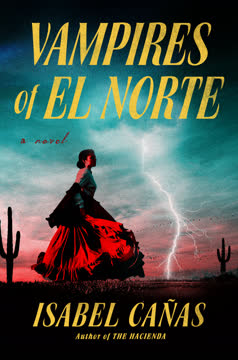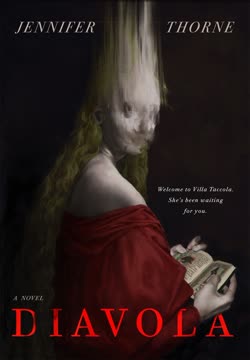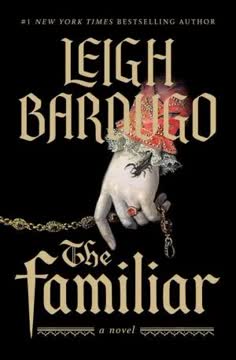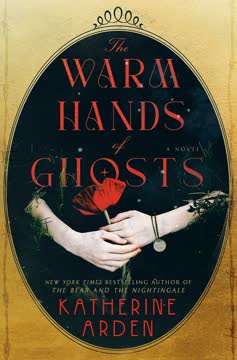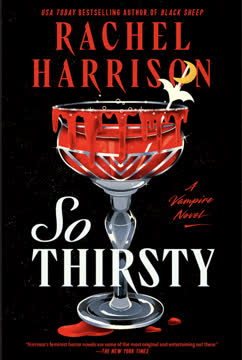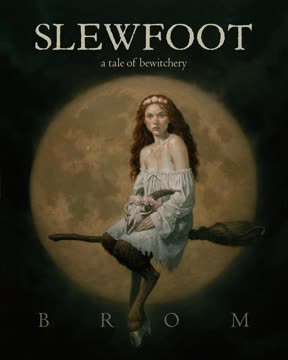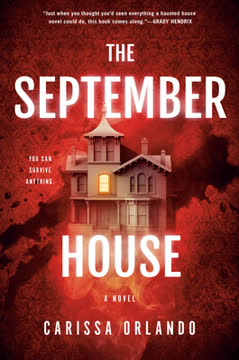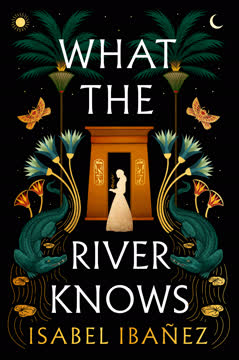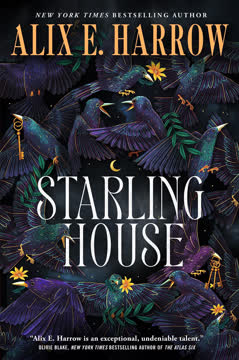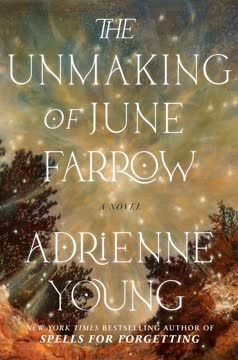Plot Summary
Magic in the Blood
On the remote Rancho Los Ojuelos in 1837, young Nena and Néstor are inseparable, bound by friendship and a shared sense of wonder. The land is said to be touched by magic, but for Nena, the real magic is the bond she feels with Néstor and the stories that swirl around their home. As tensions rise with the arrival of Anglo strangers and rumors of violence, the children's innocence is shadowed by the adult world's fears. One night, seeking Spanish silver to secure their future, they encounter a monstrous creature by the springs. The attack leaves Nena gravely wounded, and the trauma will haunt them both for years to come.
Night of the Monster
Néstor's desperate attempt to save Nena from the beast is both heroic and tragic. He kills the monster, but not before it mauls Nena, leaving her lifeless in his arms. He carries her home, but the adults declare her dead. Overcome with guilt and terror, Néstor flees the rancho, believing he has lost his home and the girl he loves forever. This night becomes the defining wound of their lives, fracturing their bond and setting them on separate paths marked by loss, shame, and longing.
Years of Separation
Néstor wanders the northern frontier, working as a vaquero, driven by the need to belong and to forget. He becomes skilled, respected, but emotionally adrift, haunted by dreams of Nena and the night he lost her. Meanwhile, Nena survives, scarred but alive, and grows into a determined young woman, apprenticed to her grandmother as a curandera. Both are shaped by the trauma of that night—Néstor by guilt and exile, Nena by the wound that marks her as different and the loneliness of being left behind.
Shadows on the Rancho
As Nena tends to the sick and wounded on the rancho, she senses a growing darkness. Men fall ill with susto, a spiritual sickness that leaves them weak and haunted. Strange wounds appear, and the old stories of monsters seem to come alive. Nena's skills as a healer are tested, but she is also burdened by her family's expectations—her value measured by her potential to secure alliances through marriage. The threat of Anglo encroachment and the mysterious illness both loom, and Nena's sense of home is increasingly fragile.
Threats from the North
News arrives that the Yanquis (Americans) are advancing, claiming land and building forts. The rancho's men prepare to join the Mexican army, and Nena bargains for the right to accompany them as a healer, hoping to prove her worth beyond marriage. The community is beset by fear—of war, of monsters, of change. Nena's determination to protect her home and family is matched only by her dread of being bartered away. The rancho's fate, and her own, hang in the balance.
Return of the Lost
A letter from Los Ojuelos reaches Néstor, asking him to return and join the fight against the Yanquis. Torn between guilt and duty, he rides back to the rancho, accompanied by his friend Beto. The journey is fraught with memories and dread—he fears facing Nena's family, and above all, he fears learning the truth about Nena. When he arrives, he is stunned to find her alive. Their reunion is charged with shock, longing, and unresolved pain, as both struggle to reconcile the past with the present.
Ghosts and Reunions
Nena and Néstor's reunion is awkward and fraught. She is angry at his abandonment; he is haunted by guilt and disbelief. The rancho is alive with preparations for war, and the community's old hierarchies and prejudices are on full display. Néstor is assigned to protect Nena on the journey to Matamoros, but their interactions are tense, full of unspoken accusations and longing. Both are forced to confront the ghosts of their shared past and the barriers that still stand between them.
Old Wounds, New Fears
As the squadron travels toward Matamoros, Nena and Néstor are thrown together, forced to rely on each other for survival. The mysterious illness—susto—continues to claim victims, and the threat of monsters is ever-present. Their old intimacy flickers amid arguments and misunderstandings. Nena's skills as a healer are tested when Beto is attacked and nearly killed by a vampire-like creature. The truth about the monsters becomes undeniable, and the old stories take on new, terrifying reality.
Susto and Survival
Nena's healing powers are pushed to the limit as she saves Beto and others from the brink of death. The attacks grow bolder, and the connection between the monsters and the illness is clear. Néstor and Nena's relationship deepens through shared danger, but is also strained by secrets and the weight of their history. The monsters are not just threats from the outside—they are manifestations of trauma, loss, and the violence that has shaped their world.
The Gathering Storm
The squadron joins the Mexican army at Palo Alto, where the chaos of battle is matched by the chaos within. Nena tends to the wounded as the fighting rages, and the monsters are unleashed amid the carnage. The boundaries between human and inhuman, friend and foe, blur. Néstor and Nena are forced to flee together, pursued by both men and monsters. Their flight is a crucible, burning away old illusions and forcing them to confront what they truly mean to each other.
Battle at Palo Alto
In the chaos of battle, Néstor saves Nena from death, and together they witness the horror of the monsters feeding on the dead. The Yanquis are revealed to be using the vampires as weapons, chaining and unleashing them to weaken the Mexican defenders. Nena and Néstor escape across the river, their bond deepened by trauma and confession. They find shelter, share their fears and desires, and finally give in to the love that has always bound them.
Monsters Unleashed
As they journey home, Nena and Néstor piece together the truth: the monsters are not just legends, but real, and they are being used by the invaders to sow terror and death. The couple's love is tested by the knowledge that their world is changing irrevocably. They return to Los Ojuelos determined to warn and protect their people, but also aware that their own future is uncertain—threatened by both external enemies and the rigid expectations of family and society.
Flight and Confession
Back at Los Ojuelos, Nena and Néstor face the consequences of their choices. Their love, once secret and forbidden, is now undeniable. But the rancho is under siege—by Yanquis, by monsters, by the weight of tradition. Nena's family is scandalized by her return with Néstor, and Papá's anger threatens to tear them apart. Yet, in the crucible of crisis, Nena finds her voice, and Néstor finds the courage to stay and fight for her.
Salt and Sanctuary
As the monsters attack the rancho, Nena uses salt and the old rituals of her grandmother to protect her family. The community bands together, using both faith and cunning to hold the line against the supernatural threat. Nena's healing and leadership are finally recognized as essential, not just ornamental. The battle is fierce, but the rancho survives—scarred, but unbroken. The monsters, once tools of the invaders, are driven away by the power of the people's unity and tradition.
Homecoming and Heartbreak
In the aftermath, Nena and Néstor's love faces its greatest test. Papá banishes Néstor, and Nena is torn between duty and desire. The old hierarchies reassert themselves, and the cost of defiance is high. Both are forced to confront what they are willing to sacrifice for each other and for their home. The rancho is saved, but at the price of heartbreak and exile.
The Price of Honor
Nena is pressured to marry for the good of the rancho, her own desires dismissed as childish. Néstor, wounded and alone, is forced to reckon with his own worth and the meaning of home. Both are haunted by the knowledge that survival often demands compromise, but also that true strength lies in choosing love and community over fear and tradition. The rancho's future, and their own, depend on the courage to break old patterns.
The Night Attack
When the Yanquis and their monsters attack Los Ojuelos, Nena and Néstor fight side by side to defend their home. Nena's bravery and resourcefulness are crucial in turning the tide—she frees the chained vampires, turning them against their captors, and saves the rancho. In the aftermath, wounded and exhausted, she finally chooses Néstor openly, defying her father and the old order. The community, recognizing their strength, begins to heal and rebuild.
Choosing Each Other
In the aftermath of battle, Nena and Néstor are finally united, their love recognized and accepted. They build a new life together, forging a home on their own land, surrounded by family and community. The scars of the past remain, but they are transformed into sources of strength. The rancho endures, not because of alliances or tradition, but because of the courage to choose love, to face monsters—both human and supernatural—and to build something new from the ashes of the old.
Characters
Nena Serrano
Nena is the daughter of Rancho Los Ojuelos' patrón, marked from childhood by trauma and a physical scar from a monster's attack. Apprenticed to her grandmother as a curandera, she is both healer and outsider, struggling to prove her worth in a world that values her primarily as a bargaining chip for marriage. Nena's psychological journey is one of reclaiming agency—overcoming the wounds of abandonment, the weight of family expectations, and the terror of supernatural and human threats. Her love for Néstor is both a source of pain and healing, and her ultimate choice to claim her own future is an act of radical self-assertion.
Néstor Duarte
Néstor is the son of a vaquero, orphaned by violence and driven from Los Ojuelos by guilt over Nena's apparent death. He spends years wandering, becoming a skilled and respected cowboy, but is emotionally adrift, haunted by dreams of home and the girl he lost. His return to Los Ojuelos is a journey of reckoning—with his past, his worth, and his capacity for love. Néstor's development is marked by the struggle to overcome shame and to claim a place in a world that has always treated him as lesser. His love for Nena is both his wound and his salvation.
Doña Mercedes Serrano
Nena's mother is a formidable presence, fiercely protective of her family's honor and the rancho's reputation. She embodies the expectations and constraints of her class and gender, often clashing with Nena's desire for autonomy. Her relationship with Nena is fraught—loving but controlling, supportive but often blind to her daughter's true needs. Mercedes' psychological rigidity is both a source of strength and a barrier to change.
Don Feliciano Serrano
Nena's father is the embodiment of patriarchal authority, ruling the rancho with a mixture of pride, fear, and love. He is deeply invested in tradition and the survival of his land, often at the expense of his children's happiness. His relationship with Nena is marked by both tenderness and tyranny; with Néstor, by suspicion and class prejudice. Feliciano's arc is one of gradual, painful adaptation to a changing world.
Abuela (Nena's Grandmother)
Abuela is the spiritual heart of the rancho, a healer whose knowledge of herbs, rituals, and the old stories is both practical and mystical. She is Nena's mentor and confidante, encouraging her to heal not just others but herself. Abuela's presence is a source of comfort and guidance, and her belief in the power of tradition and community is central to the rancho's survival.
Beto Cepeda
Beto is Néstor's closest friend, a vaquero of mixed heritage who understands what it means to be caught between worlds. He is witty, resourceful, and fiercely loyal, providing both comic relief and emotional support. Beto's own experiences of marginalization make him a keen observer of the rancho's dynamics, and his friendship with Néstor is a model of chosen family.
Casimiro Duarte
Casimiro is Néstor's cousin and fellow vaquero, a figure of stability and camaraderie. He is brave, practical, and deeply loyal to his family and friends. Casimiro's presence grounds Néstor, and his willingness to fight for the rancho reflects the broader theme of community resilience.
Félix Serrano
Nena's older brother is gentle and diplomatic, often caught between his father's expectations and his sister's needs. He is a voice of reason and support, but also constrained by his own sense of duty. Félix's journey is one of learning to balance loyalty to family with the demands of justice and change.
Javiera Serrano
Javiera represents the next generation, her innocence threatened by the violence and upheaval that engulf the rancho. Her relationship with Nena is tender and protective, and her vulnerability is a constant reminder of what is at stake.
The Vampires (El Cuco)
The vampires are both literal monsters and symbols of the violence, exploitation, and dehumanization wrought by colonization and war. They are used by the Yanquis as weapons, but are also victims—chained, tormented, and forced to act against their nature. Their presence blurs the line between human and inhuman, and their interactions with Nena reveal the possibility of understanding and mercy even in the face of horror.
Plot Devices
Dual Narrative and Time Jumps
The novel employs a dual narrative structure, alternating between Nena and Néstor's perspectives and moving between past and present. This allows the reader to experience the formative trauma of their childhood and the long, painful process of healing and reunion. The time jumps heighten the sense of loss and longing, and the gradual revelation of secrets builds emotional tension.
Folklore and Magical Realism
The use of Mexican folklore—curanderismo, stories of El Cuco, and the power of salt—grounds the supernatural elements in cultural tradition. Magic is both metaphor and reality, a source of both danger and protection. The monsters are not just external threats, but manifestations of historical trauma and the violence of colonization.
Susto as Metaphor
The mysterious sickness that afflicts the rancho's men is both a literal malady and a metaphor for the wounds inflicted by violence, displacement, and fear. Healing is not just physical, but spiritual and communal, requiring the restoration of trust, love, and belonging.
Social Hierarchy and Forbidden Love
The romance between Nena and Néstor is shaped by the rigid hierarchies of their world—class, gender, and family honor. Their love is both a source of strength and a site of conflict, forcing them to choose between tradition and self-determination. The plot is driven by their struggle to claim each other in the face of overwhelming opposition.
Monsters as Colonial Allegory
The vampires are not just supernatural threats, but allegories for the violence of colonization—the draining of land, life, and culture by outsiders. Their use as weapons by the Yanquis literalizes the dehumanization and exploitation at the heart of the conflict. The ultimate victory comes not from destroying the monsters, but from reclaiming agency and community.
Salt and Ritual as Protection
The use of salt, herbs, and ritual is both practical and symbolic—a reclaiming of indigenous and folk wisdom in the face of modern violence. These plot devices underscore the theme that survival depends on honoring the past and adapting it to new threats.
Analysis
Vampires of El Norte is a sweeping, genre-blending novel that uses the conventions of historical fiction, romance, and horror to explore the wounds of colonization, the power of community, and the struggle for self-determination. At its heart, it is a story about the costs and possibilities of love—romantic, familial, and communal—in a world marked by violence and change. The monsters that haunt the rancho are both literal and metaphorical, embodying the traumas of history and the dangers of forgetting. Through Nena and Néstor's journey, the novel interrogates the meaning of home, the price of survival, and the courage required to choose one's own path. The lessons are clear: true strength lies not in rigid adherence to tradition or in alliances of convenience, but in the willingness to face monsters—both within and without—and to build something new from the ashes of the old. The novel's ultimate message is one of hope: that even in the darkest times, love, memory, and community can offer sanctuary and the promise of renewal.
Last updated:
Review Summary
Vampires of El Norte is a historical romance with gothic and horror elements set in 1840s Mexico. Many readers praised the atmospheric writing, vivid setting, and compelling romance between Nena and Néstor. The unique vampire lore and cultural details were appreciated. However, some felt the book leaned too heavily on romance at the expense of horror elements. Opinions varied on pacing and character development. Overall, readers found it an engaging, if sometimes slow-burning, blend of romance, history, and supernatural elements.
